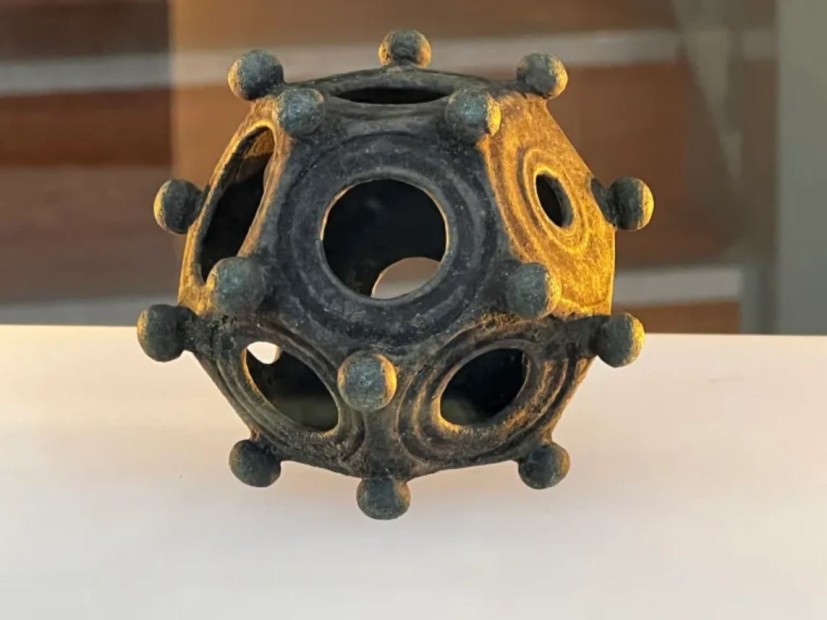Amateur volunteers from the Norton Disney History and Archaeology Group in England have discovered another example of the fascinating, but widely mysterious, ancient Roman dodecahedron artifact.
Even now, archaeologists are still scratching their heads as to what it was used for.

How the Roman Dodecahedron was Found
According to a statement to Live Science, the group's Secretary Richard Parker said that they used a previous geophysical survey, that pointed out where Earth's magnetic field had experienced an anomaly thousands of years ago, to determine areas of interests.
One such area is a dig site located in the Lincolnshire village of Norton Disney, a city 35 miles southeast of Sheffield in England, where a bunch of ancient Roman coins and broaches have already been found by metal-detecting hobbyists.
It is the buried pit excavated from that site that the dodecahedron finding was made. As per Parker, he was in the middle of brewing a cup of tea when he heard a couple of the volunteers shouting. Turns out those amateur archaeologists just hit big during the tail-end of their two-week dig.
"It was our second-to-last day of the excavation, and up pops this dodecahedron in Trench Four," Parker told the science publication, adding that the team was taken by surprise by the find as they "weren't getting many metal [detections] at that point."
Other objects unearthed during their excavation projects were heavily fragmented or severely damaged, however, not the golf-sized Roman dodecahedron, which was still in one whole piece after it was believed to have been buried in the site 1,700 years ago.
The artifact is now on display in the National Civil War Centre in the Newark Museum and was featured in BBC's "Digging for Britain" TV program.
Read Also : American Museum of Natural History Closes Two of Its Native American Displays Amid New Federal Regulations
The Roman Dodecahedron's Purpose is Still a Mystery
In over two centuries, upwards of 100 Roman dodecahedrons have been discovered across the Northwestern region of Europe.
Many of the objects have been dated as far back as between the first and third centuries AD and were typically located in the Roman Empire's past territories in the north.
At times, these artifacts were dubbed "Gallo-Roman" dodecahedrons, attributing them to the Gauls or Celts who inhabited the discovery sites in the past.
Each of the twelve-sided objects where hollow and was made of some variation of metal material, which was usually bronze. The sides of these dodecahedrons all exhibited differing hole sizes and were often bordered by concentric rings engraved on the surface.
It possesses no writing whatsoever and its corners are studded with a tiny ball-like shape. As such, archaeologists have been stumped as to what they were used for, let alone why they were made in the first place.
Some scholars proposed that it may have been some sort of recreational device akin to that of the dice, while others theorized it to be a Roman ammunition of some kind.
Theorists across the internet have also put forward some of their hypotheses, with one saying it was used to calculate dates from stars, while the other says it stored knitting patterns for the design of a particular Roman glove.
In the end, many of these theories were unsatisfactory and were simply short in supporting data, especially the notion that it was used as a weapon because of its meticulous design.
That said, the prevailing explanation now is that it was used for cultic or religious reasons by the Gallo-Romans.